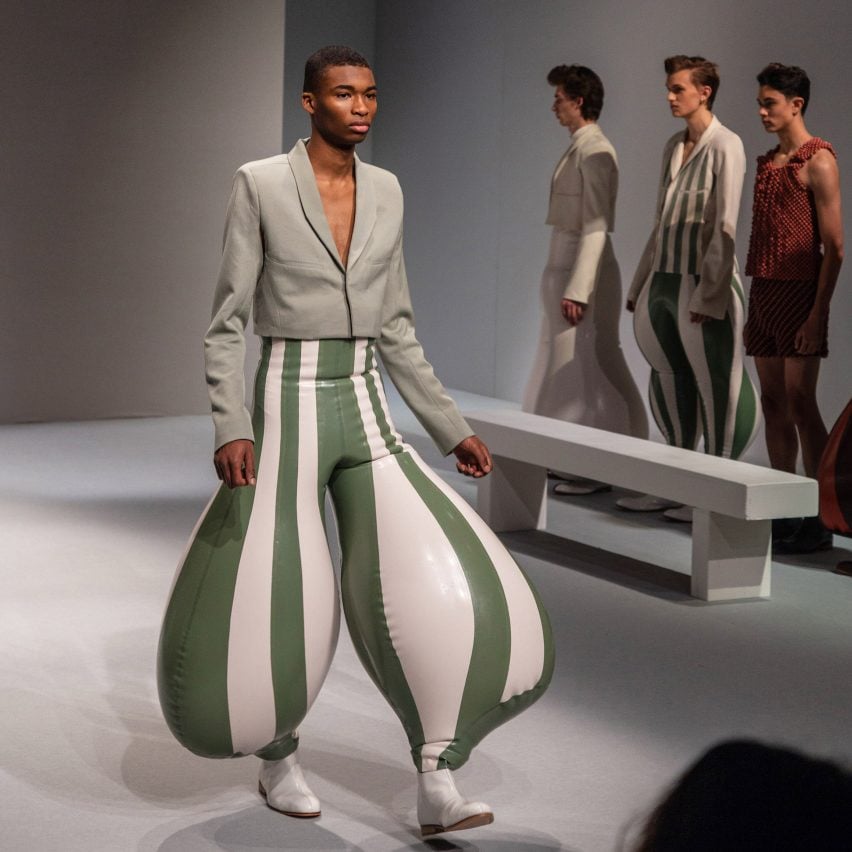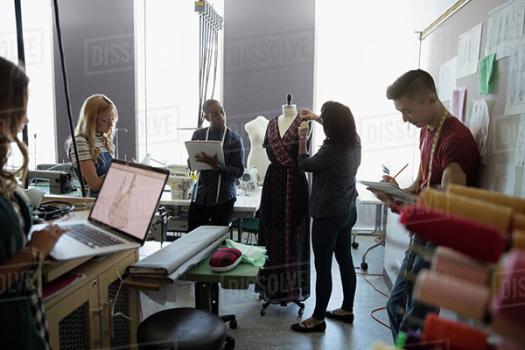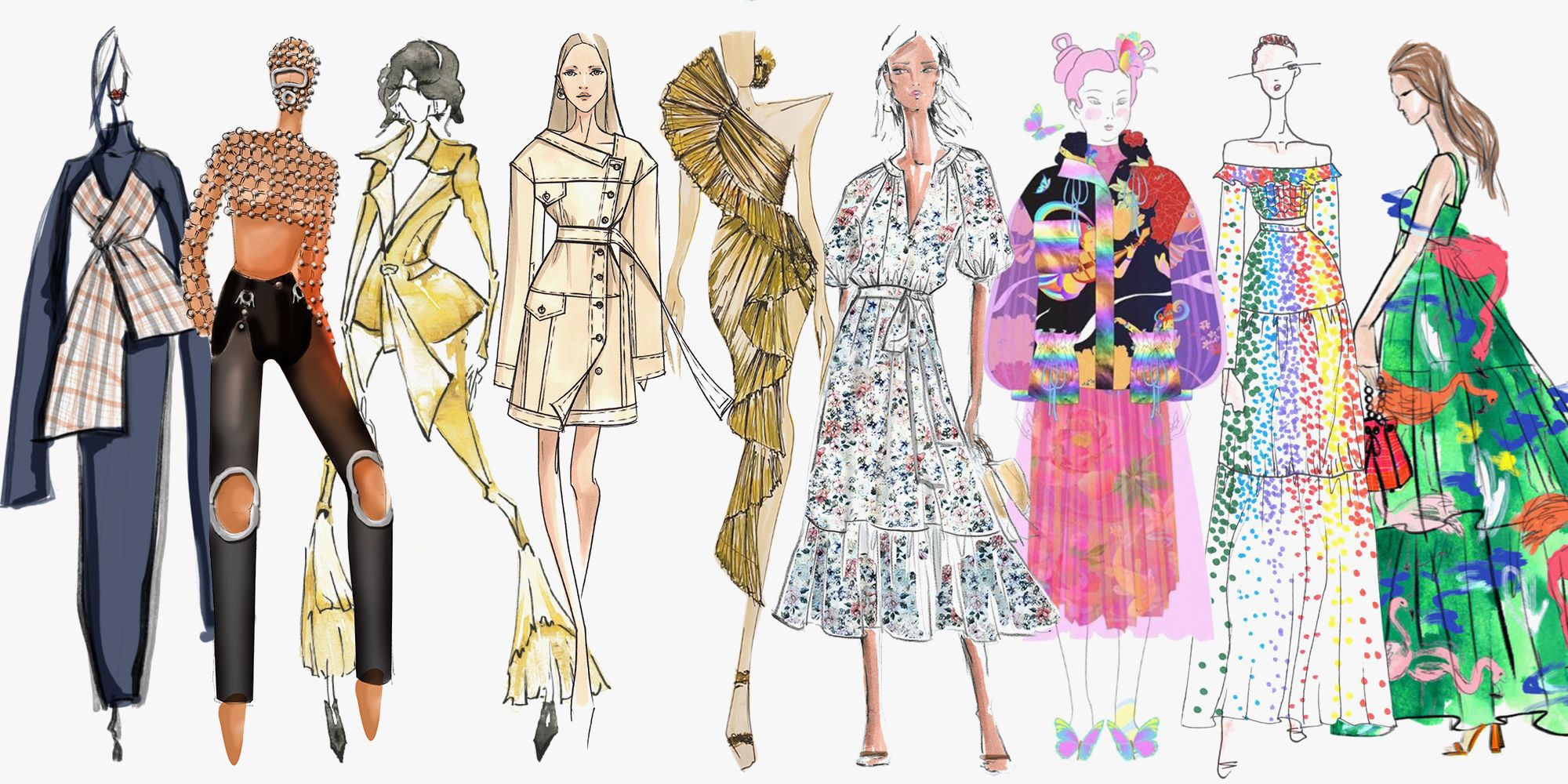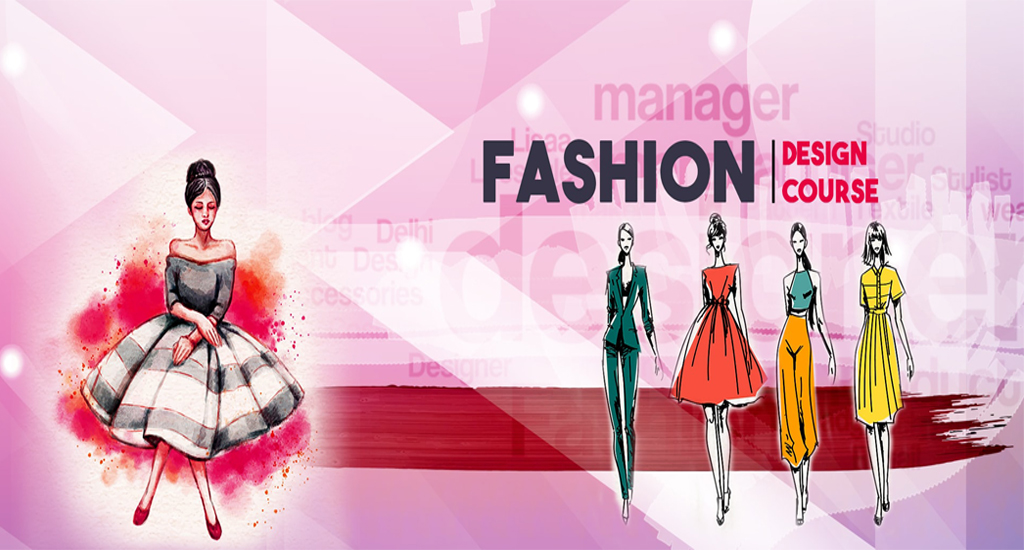What is a Fashion Designer, Anyway?
A fashion designer is a professional responsible for creating original clothing and accessory designs, from conceptualization to production. Fashion designers play a crucial role in the fashion industry, combining artistic talent with technical skills to create garments that are both aesthetically pleasing and functional. Their responsibilities include researching trends, sketching designs, selecting fabrics, and overseeing the production process. To become a successful fashion designer, one typically needs a strong foundation in art, design, and textiles, as well as excellent communication and project management skills.
Fashion designers can work in various settings, including fashion houses, design studios, and manufacturing companies. Some may also choose to start their own labels or work as freelancers. The role of a fashion designer is often synonymous with creativity, innovation, and attention to detail. However, there are other titles that fashion designers may be known by, such as fashion artist, fashion engineer, or apparel designer. These alternative titles may reflect specific areas of specialization or expertise within the fashion industry.
In addition to their technical skills, fashion designers must also stay up-to-date with the latest trends, technologies, and consumer preferences. This requires a deep understanding of the fashion industry, including its history, cultural context, and social impact. Fashion designers must be able to balance their creative vision with commercial viability, ensuring that their designs are both beautiful and marketable.
As the fashion industry continues to evolve, the role of the fashion designer is becoming increasingly complex. With the rise of sustainable fashion, digital printing, and social media, fashion designers must be able to adapt to new technologies and consumer demands. This requires a strong foundation in traditional design skills, as well as a willingness to learn and innovate. Whether known as a fashion designer, fashion artist, or apparel designer, this professional plays a vital role in shaping the fashion industry and creating garments that inspire and delight consumers.
Behind the Seams: Unconventional Titles for Fashion Designers
While the term “fashion designer” is widely recognized, there are several alternative titles that professionals in this field may be known by. These titles often reflect specific areas of specialization or expertise within the fashion industry. For instance, a fashion artist may focus on the creative and aesthetic aspects of design, while a fashion engineer may concentrate on the technical and production aspects. Another name for fashion designer, such as apparel designer or clothing designer, may also be used to describe this role.
One of the lesser-known titles in the fashion industry is that of a fashion technologist. This professional combines technical skills with creative vision to develop innovative textiles, fabrics, and materials. Fashion technologists work closely with designers and manufacturers to create products that are both functional and aesthetically pleasing. Another title that is gaining recognition is that of a sustainable fashion designer. This professional focuses on creating garments and accessories that are environmentally friendly, socially responsible, and economically viable.
Other unconventional titles for fashion designers include fashion stylist, fashion consultant, and fashion curator. These professionals work with designers, brands, and retailers to create visually appealing and cohesive collections. They may also provide advice on fashion trends, styling, and merchandising. While these titles may not be as well-known as that of a fashion designer, they play a crucial role in the fashion industry and require a deep understanding of fashion design principles, trends, and technologies.
In addition to these titles, there are many other specialized roles within the fashion industry, such as textile designer, pattern maker, and fashion illustrator. Each of these roles requires a unique set of skills and knowledge, but they all contribute to the creation of beautiful and functional garments. Whether known as a fashion designer, fashion artist, or apparel designer, these professionals are the driving force behind the fashion industry, and their work has a significant impact on our culture and society.
How to Become a Fashion Designer: Education and Training Options
For individuals interested in pursuing a career in fashion design, there are several educational pathways and training options available. A degree in fashion design or a related field is often preferred by employers, but it’s not the only way to break into the industry. Many fashion designers start their careers by earning an associate’s or bachelor’s degree in fashion design, fashion merchandising, or a related field. These programs typically include coursework in design principles, textiles, pattern making, and fashion history.
In addition to formal education, many aspiring fashion designers also complete internships or apprenticeships with experienced designers or fashion companies. These hands-on experiences provide valuable insight into the fashion industry and can help individuals build connections and gain practical skills. Online courses and vocational training programs are also available for those who prefer a more flexible or specialized approach to learning.
Some of the key skills and knowledge required to become a successful fashion designer include proficiency in design software, such as Adobe Creative Suite, and a strong understanding of textiles, fabrics, and materials. Fashion designers must also be able to communicate effectively with clients, colleagues, and manufacturers, and have a keen eye for detail and aesthetics.
Another name for fashion designer, such as fashion artist or apparel designer, may also require specialized training or education. For example, a fashion artist may need to develop skills in illustration, painting, or other forms of visual art. An apparel designer, on the other hand, may focus on the technical aspects of garment construction and production.
Regardless of the specific title or role, fashion designers must be able to stay up-to-date with the latest trends, technologies, and industry developments. This requires a commitment to ongoing education and professional development, as well as a willingness to adapt to changing market conditions and consumer demands.
Fashion Design Specializations: Niche Areas of Expertise
The fashion industry is diverse and multifaceted, with various specializations that cater to different needs and interests. One such specialization is sustainable fashion, which focuses on creating garments and accessories that are environmentally friendly, socially responsible, and economically viable. Sustainable fashion designers must have a deep understanding of eco-friendly materials, production methods, and supply chain management.
Another area of specialization is textile design, which involves creating fabrics and materials for fashion applications. Textile designers must have a strong understanding of fibers, yarns, and weaving techniques, as well as the ability to create innovative and aesthetically pleasing designs. Fashion technology is another niche area that combines fashion design with technology to create innovative and functional garments. Fashion technologists must have a strong understanding of computer-aided design (CAD) software, 3D printing, and other technologies that are revolutionizing the fashion industry.
Other specialized areas within fashion design include fashion illustration, fashion photography, and fashion styling. Fashion illustrators create original artwork and designs for fashion brands and publications, while fashion photographers capture images of garments and models for editorial and commercial purposes. Fashion stylists, on the other hand, work with designers, models, and photographers to create visually appealing and cohesive looks for fashion shoots and runway shows.
These specialized areas require unique skills and knowledge, but they all contribute to the rich and diverse world of fashion design. Whether you’re interested in sustainable fashion, textile design, or fashion technology, there are many career paths to explore in the fashion industry. Another name for fashion designer, such as fashion artist or apparel designer, may also be relevant to these specialized areas, and can provide a starting point for those looking to pursue a career in fashion.
By exploring these niche areas of expertise, fashion designers can develop a deeper understanding of the industry and its many facets. This can lead to new and innovative designs, as well as a greater appreciation for the complexities and challenges of the fashion industry.
From Sketch to Runway: The Fashion Design Process
The fashion design process is a complex and multifaceted journey that takes a design from concept to reality. It involves several key stages, including research, sketching, prototyping, and sampling. At the beginning of the process, fashion designers conduct research to identify trends, gather inspiration, and develop a concept for their design. This research may involve analyzing fashion trends, studying the work of other designers, and gathering feedback from potential customers.
Once the research is complete, fashion designers begin sketching out their ideas. This involves creating rough sketches of the design, including the silhouette, fabrics, and embellishments. The sketches are then refined and developed into a more detailed design, including specifications for fabrics, trims, and other materials. Another name for fashion designer, such as fashion artist or apparel designer, may also be involved in this stage of the process, bringing their own unique perspective and skills to the design.
After the design is complete, fashion designers create a prototype of the garment. This involves selecting fabrics and materials, creating a pattern, and constructing the garment. The prototype is then tested and refined, with any necessary changes made to the design. Finally, the garment is sampled, which involves creating a small batch of the garment to test its quality, fit, and overall appearance.
Throughout the fashion design process, fashion designers must be able to communicate effectively with other members of the design team, including pattern makers, sample makers, and production managers. They must also be able to work well under pressure, meeting deadlines and managing multiple projects simultaneously. By following these key stages, fashion designers can create beautiful and functional garments that meet the needs of their customers.
The fashion design process is a complex and iterative process that requires a deep understanding of fashion design principles, textiles, and production methods. By mastering these skills and staying up-to-date with the latest trends and technologies, fashion designers can create innovative and successful designs that stand out in the competitive fashion industry.
Famous Fashion Designers: Inspiring Stories and Career Paths
The fashion industry is filled with talented and inspiring designers who have made a lasting impact on the world of fashion. From iconic designers like Coco Chanel and Christian Dior to modern-day designers like Marc Jacobs and Alexander McQueen, these individuals have paved the way for future generations of fashion designers. Another name for fashion designer, such as fashion artist or apparel designer, may also be used to describe these talented individuals.
One of the most famous fashion designers of all time is Coco Chanel. Born in 1883, Chanel revolutionized women’s fashion with her modernist and minimalist approach to design. She introduced the little black dress, the Chanel suit, and No. 5 perfume, which are still iconic today. Chanel’s career path was not without its challenges, but she persevered and became one of the most successful fashion designers of the 20th century.
Another famous fashion designer is Christian Dior. Born in 1905, Dior was a French designer who founded the House of Dior in 1946. He is known for his luxurious and feminine designs, which were a departure from the austerity of post-war fashion. Dior’s designs were characterized by their use of luxurious fabrics, intricate details, and a focus on femininity. He is still considered one of the greatest fashion designers of all time.
In addition to these iconic designers, there are many modern-day designers who are making a name for themselves in the fashion industry. Marc Jacobs, for example, is a renowned designer who has worked for Louis Vuitton and has his own eponymous label. Alexander McQueen was a British designer who was known for his dramatic and avant-garde designs. These designers, and many others like them, are an inspiration to aspiring fashion designers around the world.
These famous fashion designers have shown that with hard work, determination, and a passion for fashion, it is possible to succeed in the fashion industry. Their stories and career paths serve as a reminder that fashion design is a challenging but rewarding career that requires creativity, skill, and perseverance.
Breaking into the Fashion Industry: Tips for Emerging Designers
Breaking into the fashion industry can be challenging, but with the right skills, knowledge, and attitude, it is possible to succeed. For emerging designers, building a portfolio is essential. This should include a collection of designs, sketches, and prototypes that showcase their skills and creativity. Another name for fashion designer, such as fashion artist or apparel designer, may also be used to describe these emerging designers.
Networking is also crucial for emerging designers. Attend fashion events, join design organizations, and connect with other designers and industry professionals. This can help to build relationships, learn about job opportunities, and stay up-to-date with the latest trends and technologies. In addition, emerging designers should consider internships or assistant positions with established designers or fashion companies. This can provide valuable experience and exposure to the industry.
When looking for job opportunities, emerging designers should consider a variety of roles, including design assistant, pattern maker, or textile designer. These roles can provide a foot in the door and help to build a career in the fashion industry. Another name for fashion designer, such as fashion artist or apparel designer, may also be used to describe these roles.
Finally, emerging designers should stay focused and motivated. The fashion industry is highly competitive, and it can take time to build a successful career. However, with hard work, determination, and a passion for fashion, it is possible to succeed. By following these tips and staying committed to their goals, emerging designers can break into the fashion industry and build a successful career.
In addition to these tips, emerging designers should also consider the importance of social media and online presence. Having a strong online presence can help to showcase their work, connect with other designers and industry professionals, and stay up-to-date with the latest trends and technologies. By building a strong online presence, emerging designers can increase their visibility and opportunities in the fashion industry.
Staying Ahead of the Curve: Continuing Education for Fashion Designers
The fashion industry is constantly evolving, with new trends, technologies, and skills emerging all the time. To stay competitive, fashion designers must commit to ongoing education and professional development. This can involve attending workshops, seminars, and conferences, as well as participating in online courses and training programs. Another name for fashion designer, such as fashion artist or apparel designer, may also benefit from continuing education and professional development.
One of the key areas of focus for fashion designers is sustainability. With the growing awareness of environmental and social issues, fashion designers must be able to create designs that are not only aesthetically pleasing but also sustainable. This can involve learning about sustainable materials, production methods, and supply chain management. Fashion designers must also stay up-to-date with the latest technologies, including computer-aided design (CAD) software, 3D printing, and digital printing.
In addition to sustainability and technology, fashion designers must also be aware of the latest trends and styles. This can involve attending fashion shows, reading industry publications, and following fashion bloggers and influencers. By staying informed about the latest trends and styles, fashion designers can create designs that are relevant and desirable to their target market.
Another important aspect of continuing education for fashion designers is networking. By connecting with other designers, industry professionals, and potential clients, fashion designers can build relationships, learn about job opportunities, and stay informed about industry developments. This can involve attending industry events, joining design organizations, and participating in online forums and discussion groups.
Finally, fashion designers must be committed to lifelong learning. The fashion industry is constantly changing, and designers must be able to adapt to new trends, technologies, and skills. By committing to ongoing education and professional development, fashion designers can stay ahead of the curve and build a successful and sustainable career in the fashion industry.







